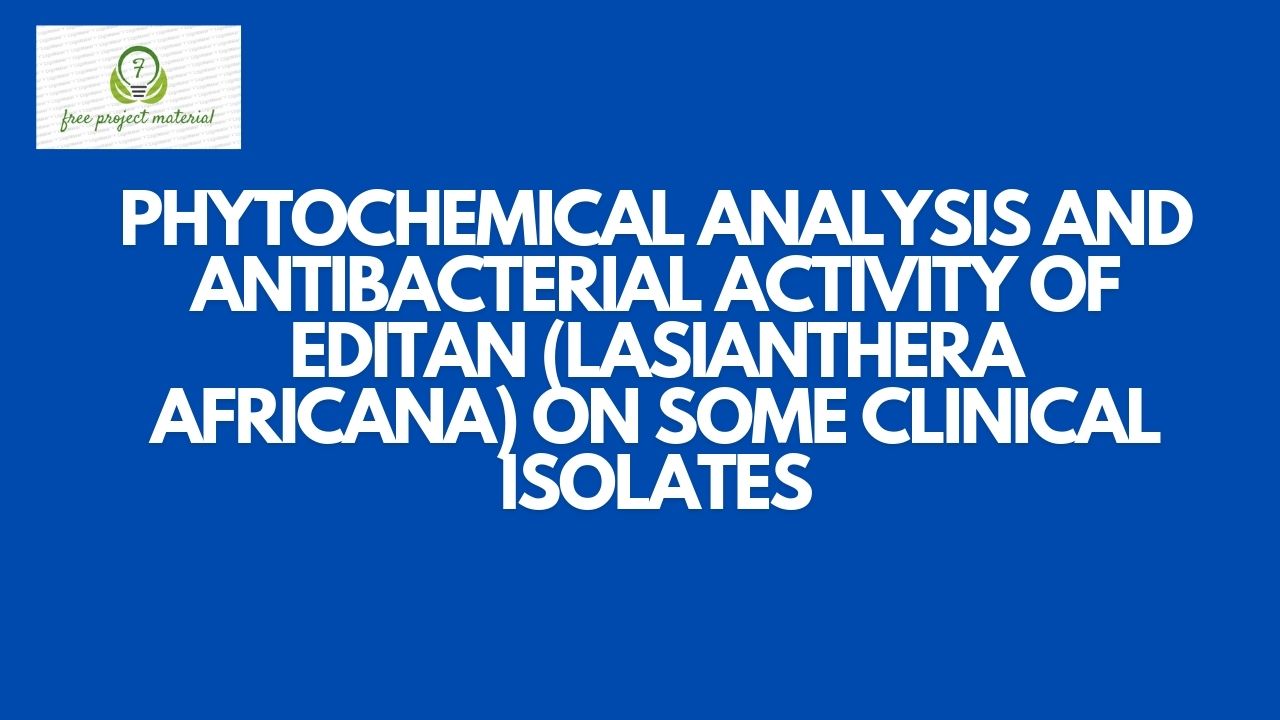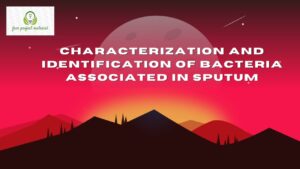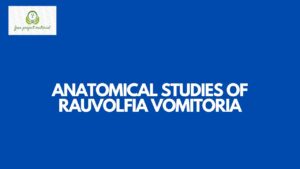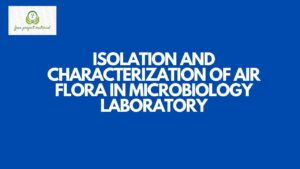ABSTRACT
This study was aimed at investigating the phytochemical composition and antibacterial activity of Lasianthera africana on some clinical isolates standard analytical methods were employed to analyze the phytochemical composition of the leaves. The phytochemical screening revealed that terpenes was low (+), saponins and Alkaloid were present in moderate amount (++), while tannins, flavonoid, phenol and cardiac glycoside was high (+++). The ethanol extract of Lasianthera africana leaves revealed that E. coli was sensitive with zones of inhibition of (17mm, 13mm, 10mm, 7mm), Staphylococcus aureus had zone of inhibition of (20mm, 17mm, 4mm and 10mm respectively), Salmonella sp zones of inhibition was (23mm, 19mm, 15mm, and 10mm respectively), Streptococcus sp had zones of inhiobition of (15mm, 13mm, 10mm and 7mm), Enterococcus sp zone of inhibition was (19mm, 17mm, 15mm and 12mm) Shigella sp had zones of inhibition of (12mm, 9mm, 6mm and 4mm). these result support the use of these plants for therapeutic purposes against bacterial infection and as such could be used for drug development.
TABLE OF CONTENT
Title Page- – – – – – – – – – i
Certification- – – – – – – – – ii
Dedication- – – – – – – – – – iii
Acknowledgement- – – – – – – – iv
Abstract- – – – – – – – – – v
Table of Content- – – – – – – – – vi-viii
CHAPTER ONE: INTRODUCTION
1.1 Background of the Study- – – – – – 1-3
1.2 Aim and Objectives of the Study – – – – 3
1.2.1 Aim of the Study- – – – – 3
1.2.2 Objectives of the Study- – – – – – – 3
Scope and Limitation of the Study- – – – – 4
CHAPTER TWO: LITERATURE REVIEW
2.1 Botanical Classification of Lasianthera Africana– – – 5
2.2 Description of Lasianthera Africana– – – – – 6
2.3 Medicinal Uses of Lasianthera Africana– – – – 6-9
2.4 Plant Extract as Pontential Antibacterial Agent- – – 9-11
2.5 Phtyochemical Composition of Lasianthera Africana– – 11-12
2.5.1 Flavonoids- – – – – – – – – 12-13
2.5.2 Phenolic Acids- – – – – – – – 13-14
2.5.3 Terpenoids- – – – – – – – – 14-15
2.5.4 Alkaloids- – – – – – – – – 15-16
2.5.5 Tannins- – – – – – – – – 16-17
2.5.6 Saponins- – – – – – – – – 17-18
2.6 Antibacterial Secondary Metabolites- – – – – 18-21
CHAPTER THREE: MATERIALS AND METHODS
3.0 Material and Method- – – – – – – 22
3.1 Materials- – – – – – – – – 22
3.2 Sterilization of Glass wares and Media – – – – 22-23
3.3 Methods- – – – – – – – – 23
3.3.1 Sample Collection- – – – – – – 23-24
3.3.2 Sample Preparation – – – – – – – 23-24
3.3.3 Qualitative Phytochemical Screening of
Lasianthera africana leave- – – – – – 24
3.4 Collection of Test Organism- – – – – – 24-25
3.4.1 Purification/Stock of Bacterial Isolate- – – – 25
3.4.2 Characterization of Bacterial Isolate- – – – – 25-26
3.5 Preparation of Antimicrobial Disc – – – – – 26
3.5.1 Disc Diffusion Method – – – – – – 26-27
3.5.2 Determination of Minimum Inhibitory Concentration
(MIC) by both Dilution Method- – – – – 27
CHAPTER FOUR: RESULT AND DISCUSSION
4.1 Results- – – – – – – – – 28-32
4.2 Discussion- – – – – – – – – 33-35
CHAPTER FIVE: CONCLUSION AND RECOMMENDATION
5.1 Conclusion- – – – – – – – – 36
5.2 Recommendation- – – – – – – – 37
References
Appendix
CHAPTER ONE: INTRODUCTION
1.1 Background of the Study
Medicinal plants have been of age long remedies for human disease because they contain components of therapeutic value (Nostro et al., 2000). Some of them are also used for prophylactic purposes. An increasing interest in herbal remedies has been observed in several parts of Nigeria and many of the herbal remedies have been incorporated into orthodox medicinal plant practice.
Diseases that have been managed traditionally using medicinal plant include malaria, epilepsy, infantile, convulsion, diarrhea, dysentery, fungal and bacterial infection (Sofowora, 1996).
In recent year, herbal prescription have received considerable attention as an alternative way to compensate for perceived deficiencies in orthodox pharmacotherapy worldwide (Arika et al., 2015). Despite a lack of medicinal evidence to support their therapeutic efficacy and toxicological effects the use of herbal medicine has increased considerably (Arika et al., 2015). According to World Health Organization (WHO), up to 80% of the world’s population in underdeveloped countries relies on traditional medicine practices for their primary health care need (WHO, 2002). Traditional medicines have been accorded greater acceptance in Africa because of the unavailability, unwanted side effect and high cost associated with orthodox medicine, inadequate health facilities and health care professionals, coupled with inadequate training of health care workers (Piero et al., 2012). The therapeutic effect of these medicinal plants can justifiably be attributed to among others things, the phytochemical in them especially the flavonoids, alkaloids, phenolic acids, tannins, and saponins.
The plant Lasianthera africana (Editan) belongs to the order Celestrales which comprises thirteen families of trees and shrubs with simple leave, it belongs to the family Lcacinacea. These kinds of plant and shrubs are of both nutritional and medicinal importance (Sofowora, 1993). Lasianthera africana is consumed as vegetable in the South-Eastern State of Nigeria. It is believed to have cooling effect on the body “Purifying effects” and prevent internal bleeding.
The leaf extract has been reported to contain alkaloid, saponins, tannins, flavonoids, terpenes, anthraquinones and cardiac glycosides with LD50 value of 500mg/kg (Okokon et al., 2007).
1.2 Aim and Objectives of the Study
1.2.1 Aim of the study
The aim of this study is to carry out phytochemical screening and antimicrobial activity of the leaves extract of Lasianthera africana on some clinical isolate.
1.2.2 Objectives of the Study
- To purify and identify some clinical isolates
- To determine the antimicrobial activity of the leaves extract of Lasianthera africana on clinical isolates.
- To determine the phytochemical contents in the leaf of Lasianthera africana
- To determine the minimum inhibitory of the leaf extracts on the clinical isolates
1.3 Scope and Limitation of the Study
This research centers on the determination of the phytochemical and antimicrobial activity of leaves extract of Lasianthera africana on some clinical isolates obtained from St Lukes Hospital Uyo. It is limited to only clinical isolates from a hospital in Uyo metropolis alone and also the leaves portion will be used.



